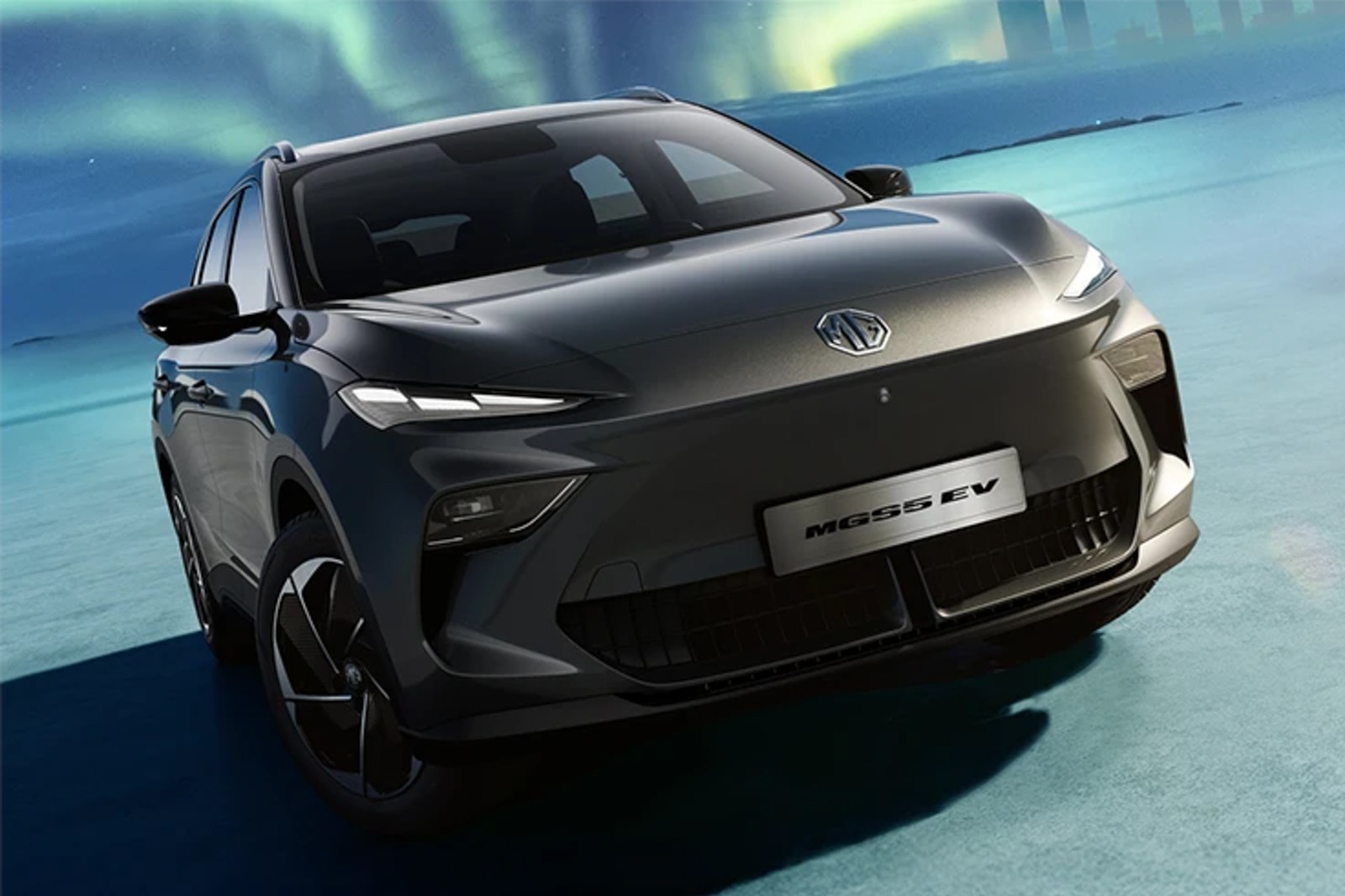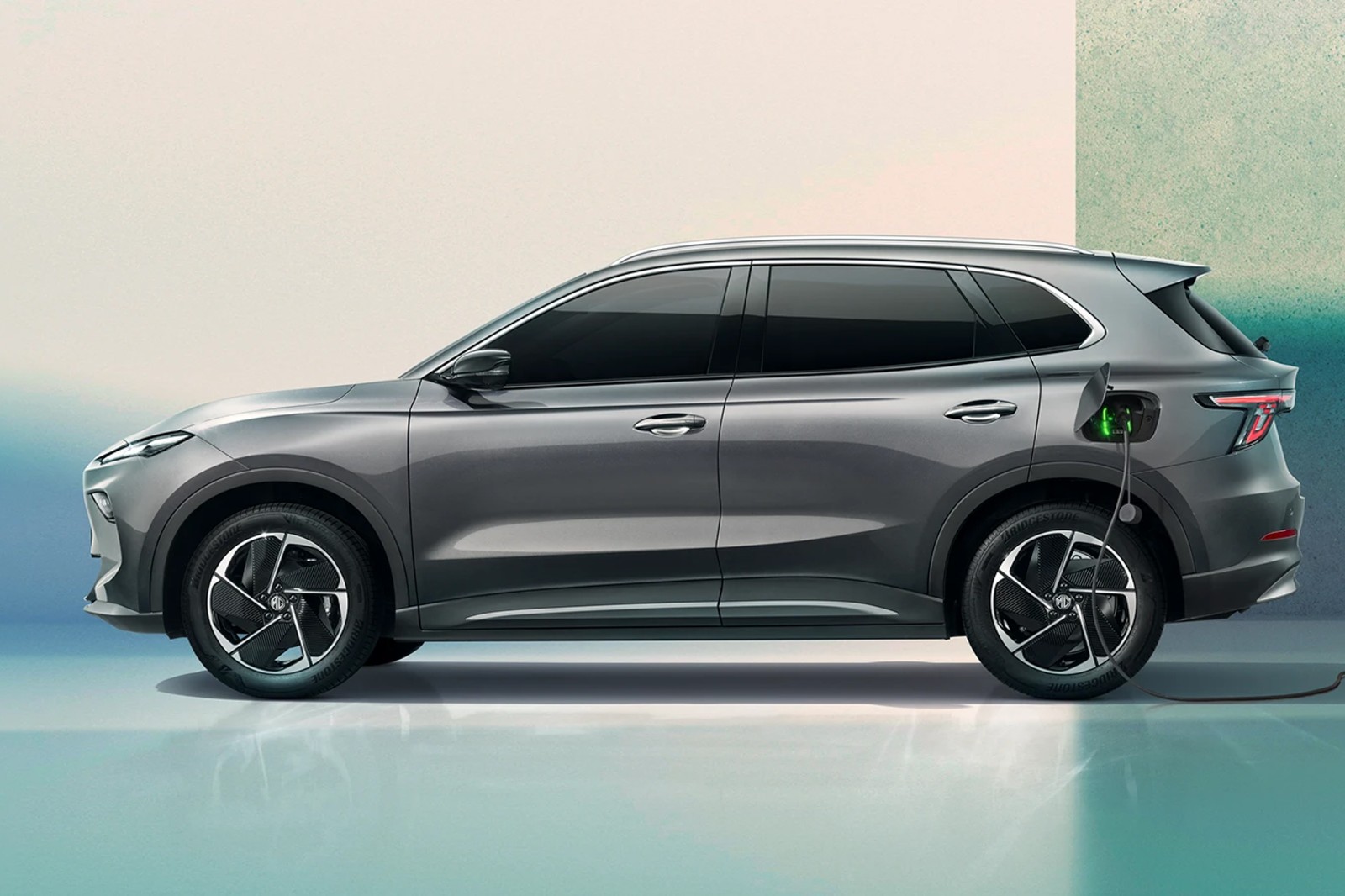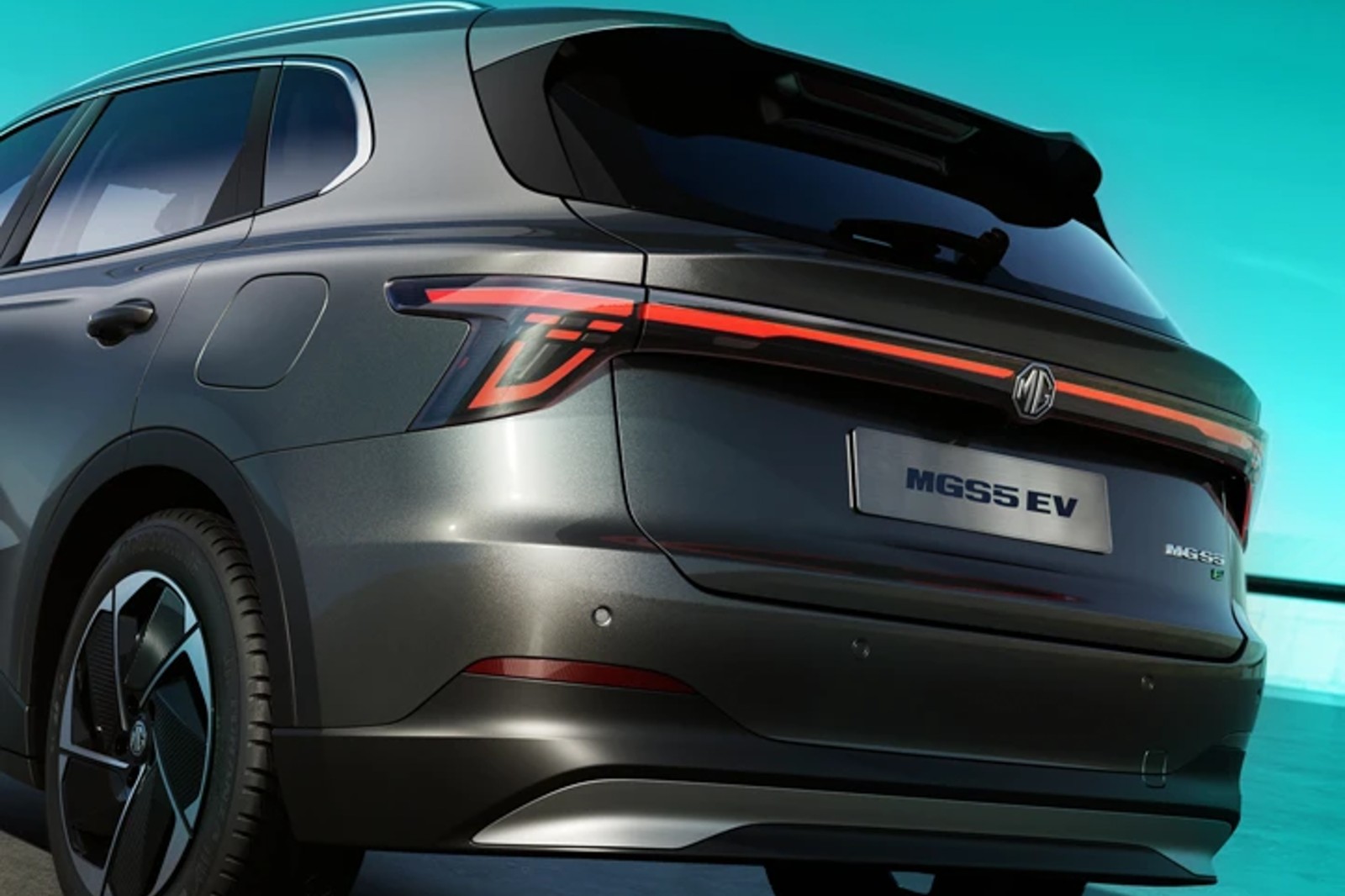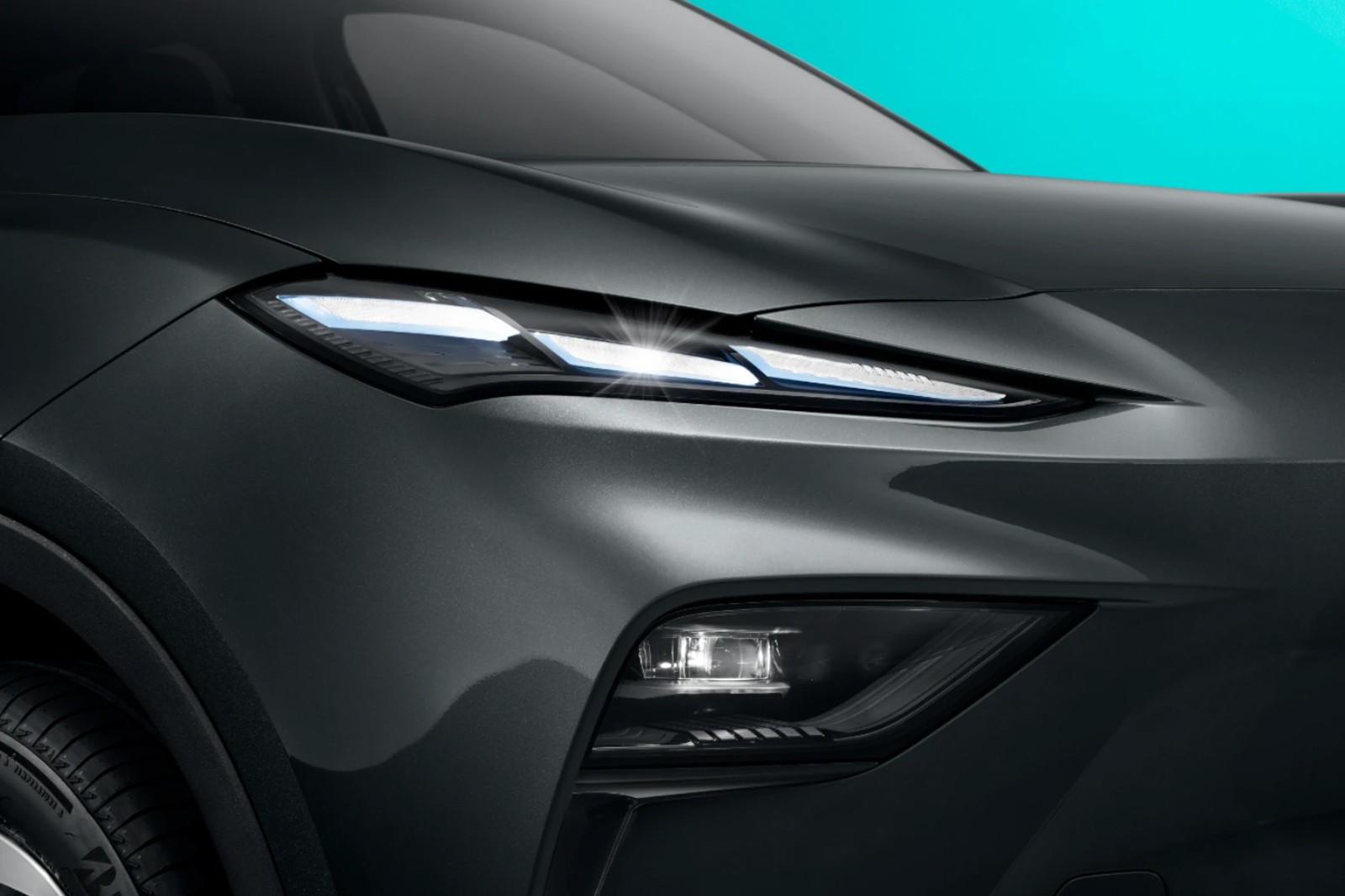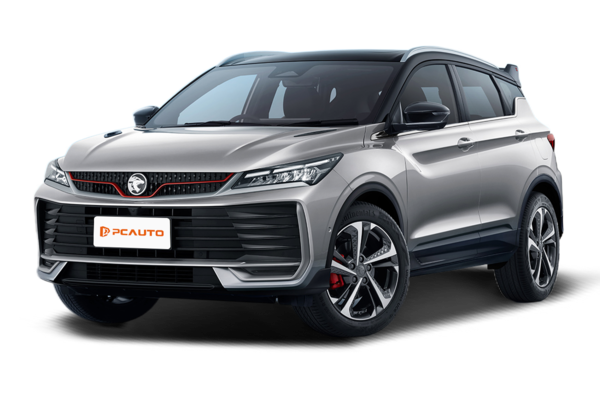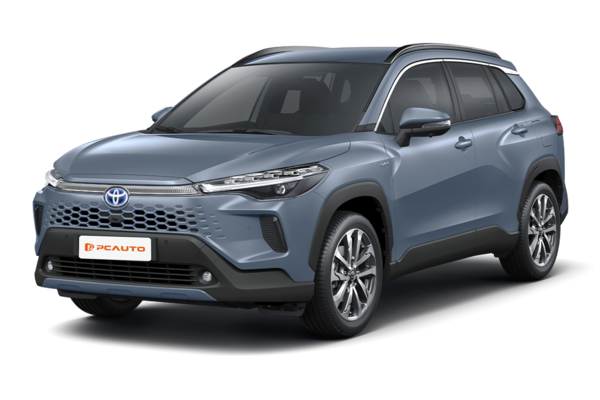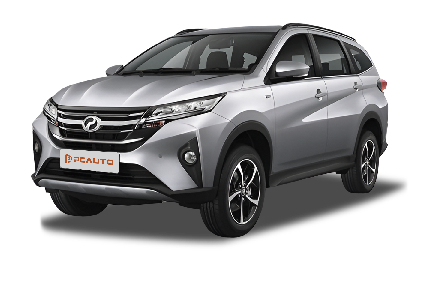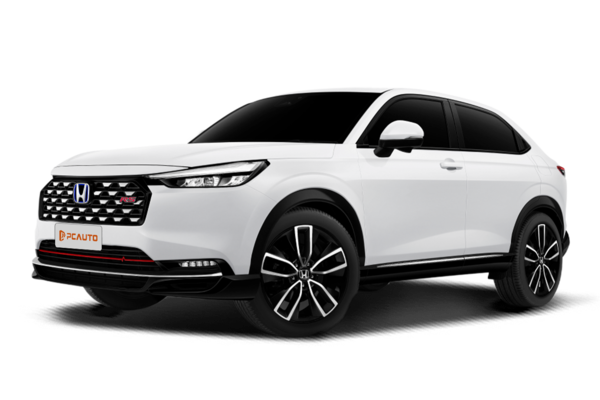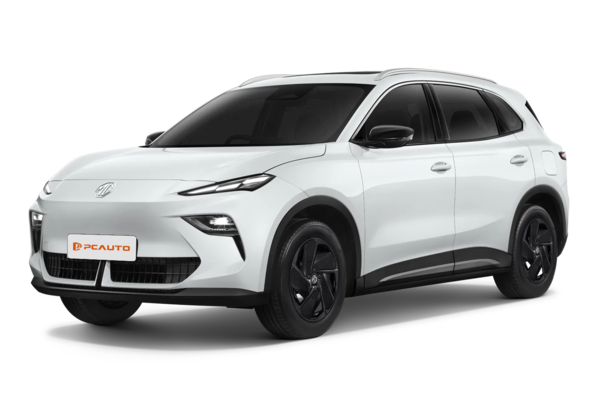Q
Is MG HS 2024 electric?
The 2024 MG HS isn't a pure electric vehicle, but it offers a plug - in hybrid electric vehicle (PHEV) version. This model is equipped with a hybrid system that combines a 1.5 - liter turbocharged gasoline engine and a 16.6 kWh lithium - ion battery pack. The maximum power of the electric motor is 90 kW (about 121 horsepower), and the combined output can reach 291 PS (about 287 horsepower). The pure - electric driving range is about 51 kilometers, and it only takes 5.8 seconds to accelerate from 0 to 100 km/h. For Malaysian consumers, the PHEV version can meet the zero - emission requirements for daily commuting (you can use the pure - electric mode for short trips) and the flexibility for long - distance driving, while enjoying lower fuel consumption. It should be noted that there are also traditional fuel versions of the MG HS available, which are equipped with 1.5T or 2.0T gasoline engines, and the specific configuration depends on the market - released version. In recent years, the MG brand has been continuously expanding the layout of new - energy vehicle models in the Southeast Asian market, and PHEV technology has been widely applied to its main models such as the HS and ZS.
Q
What is the fuel consumption of 2024 MG HS?
According to official data, the 2024 MG HS shows excellent fuel - economy performance in the Malaysian market. For the 1.5 - liter turbocharged gasoline version, the combined fuel consumption is approximately 6.5 liters per 100 kilometers. As for the plug - in hybrid electric vehicle (PHEV) version, it can travel about 75 kilometers in pure - electric mode, and its combined fuel consumption is as low as 1.7 liters per 100 kilometers. However, the specific figures may vary due to factors such as driving habits, road conditions, and vehicle load.
For Malaysian consumers, choosing the hybrid version not only means lower fuel costs but also complies with the local government's policy of promoting energy - efficient vehicles (EEV). Some states may offer road tax exemptions. It's worth noting that all models of the MG HS come standard with an intelligent driving mode switching function, which can automatically optimize power output to improve fuel efficiency. Owners are advised to conduct regular maintenance (especially checking tire pressure and changing engine oil) to ensure the vehicle maintains optimal fuel - consumption performance.
If you often encounter city traffic jams, you can make good use of the pure - electric mode of the PHEV version. This can not only reduce exhaust emissions but also lower noise pollution, which is especially useful for commuting in big cities like Kuala Lumpur.
Q
How big is the battery in the 2024 MG HS?
The 2024 MG HS offers two powertrain versions in the Malaysian market. The plug - in hybrid version (HS PHEV) is equipped with a lithium - ion battery pack with a capacity of 16.6 kWh, and its pure - electric driving range can reach up to 52 kilometers (NEDC standard), which is suitable for daily short - distance commuting. While the fuel - only version is not equipped with a high - voltage battery.
For Malaysian consumers, the advantage of the plug - in hybrid version is that they can enjoy the low fuel consumption characteristics of electric vehicles (the combined fuel consumption can be as low as 1.7L/100km) without worrying about the shortage of charging facilities, because the engine can serve as a backup power source. It's worth noting that the battery capacity and driving range performance can be affected by actual factors such as driving habits and air - conditioning usage. It is recommended to take a test drive at an authorized dealership before purchasing a car.
In recent years, the MG brand has been actively deploying new - energy vehicle models in the Malaysian market. The battery technology of the HS PHEV adopts a liquid - cooled temperature control system, which can better adapt to the tropical climate. Meanwhile, the manufacturer offers an 8 - year or 150,000 - kilometer battery warranty policy to provide long - term protection for consumers.
If you consider charging convenience, the public charging pile network in major cities in Malaysia has been gradually improved, and car owners can also apply for subsidies for home charging pile installation.
Q
How do you open the fuel cap on a MG HS 2024?
To open the fuel tank cap of the 2024 MG HS, first make sure the vehicle is unlocked. Then, walk to the left side of the vehicle body where the fuel tank cap is located (usually on the left for right - hand - drive cars in Malaysia). Simply press the outer edge of the fuel tank cap, and it will pop open automatically. Then, turn the inner cap counter - clockwise to start refueling.
This car features a convenient keyless opening design. The operation is simple and in line with the practical style of modern mainstream SUVs. It's worth mentioning that many Malaysian car owners may be concerned about the anti - theft function of the fuel tank cap. The fuel tank cap of the MG HS will automatically lock when the vehicle is locked, requiring no additional operations. This is similar to the design of Japanese cars like the Toyota RAV4 or Honda CR - V.
In addition, it is recommended to regularly check whether the sealing ring of the fuel tank cap is aging to ensure the tightness of the fuel system. This is especially important in Malaysia's hot and rainy climate, as it can effectively prevent water vapor or impurities from entering the fuel tank. If you encounter a situation where the fuel tank cap cannot be opened, you can refer to the manual and use the emergency pull - cord in the trunk. This is an emergency function available in most modern vehicles.
Q
How to use cruise control MG HS 2024?
Using the cruise control function on the MG HS 2024 is very simple. First, make sure the vehicle is traveling at a speed of over 30 km/h. Then, press the cruise control button on the left side of the steering wheel to activate the system. At this time, the cruise icon will appear on the dashboard. Next, set the desired speed using the “+” or “-” buttons. The system will automatically maintain the vehicle speed without you having to step on the accelerator. If you need to temporarily cancel the cruise, simply tap the brake or press the cancel button. To resume, press the “RES” button. To completely turn off the cruise control, press the main cruise control button again. For Malaysian users, it is especially recommended to drive manually in busy roads or on slippery rainy days to ensure safety.
Cruise control is a practical function for long - distance highway driving, which can effectively reduce driving fatigue. However, it's important to note that it is not fully autonomous driving, and the driver still needs to keep an eye on the road conditions. The operating logic of cruise control systems is similar among different brands, but the specific button locations may vary slightly. It is recommended to refer to the owner's manual before using it for the first time.
With the development of technology, some high - end models are already equipped with adaptive cruise control, which can automatically adjust the vehicle speed to maintain a safe distance. However, the cruise control on the MG HS 2024 is still a basic version, and the driver needs to actively intervene in the following distance.
Q
What is the top speed of the 2024 MG HS?
The top speed of the 2024 MG HS is approximately 195 km/h. This figure is based on the performance of its 1.5-liter turbocharged engine or plug-in hybrid system. The specific value may vary slightly depending on the vehicle configuration and drive mode. As an SUV targeting the family market, the MG HS focuses more on fuel economy and smoothness in daily driving rather than purely pursuing top - speed performance. Therefore, this speed is sufficient to meet the legal speed limits on Malaysian highways.
For local consumers, the MG HS is also equipped with an air - conditioning system suitable for the tropical climate and an electronic stability program for rainy road conditions. Its intelligent in - car system also supports the Malay language interface, which enhances the convenience of use. If you have higher requirements for performance, you can pay attention to other sporty models of the MG brand. However, it's important to drive safely, as the road conditions and traffic situations in some parts of Malaysia may not be suitable for long - term high - speed driving.
Q
How much horsepower does the MG HS 2024 have?
The powertrain options of the 2024 MG HS in the Malaysian market vary depending on the specific configurations. The main models are equipped with a 1.5 - liter turbocharged gasoline engine, which can deliver a maximum power of about 162 horsepower. Paired with a 7 - speed dual - clutch transmission, its power performance meets the needs of daily commuting and light - duty driving.
If it's a plug - in hybrid version (such as the HS PHEV), the combined horsepower can be increased to about 258 horsepower, and it has an all - electric range of about 52 kilometers, which is suitable for users who focus on fuel economy. It's worth mentioning that horsepower is just one of the indicators to measure a car's performance. Torque output, transmission tuning, and vehicle weight also affect the actual driving experience. It is recommended that consumers pay attention to the low - speed acceleration and high - speed overtaking performance during test drives.
In recent years, the MG brand has strengthened its presence in Southeast Asia through models like the HS. Its intelligent connectivity features, such as the 10.1 - inch touchscreen and voice control, also meet the preferences of Malaysian users for technological experiences. Before purchasing a car, consumers can compare the warranty terms and after - sales networks of Japanese or Korean SUVs in the same class.
Q
What is the safety rating of MG HS 2024?
As of now, the specific safety rating data for the 2024 MG HS hasn't been released by ASEAN NCAP or Malaysian official agencies. However, referring to the previous MG HS models that achieved a five - star rating in Euro NCAP (in 2019), with the application of technologies in its body structure and active safety features like adaptive cruise control, lane - keeping assist, and automatic emergency braking, it's expected that the 2024 model will maintain a high standard in safety performance. Particularly for the Malaysian market, it might enhance adaptability to the tropical climate, such as improving the heat dissipation of the braking system or features related to visibility during the rainy season.
It's worth noting that when choosing a car, Malaysian consumers can first check the localized test results certified by ASEAN NCAP or JPJ. This is because there may be differences in the configurations or test standards of the same model in different regions. For example, some imported cars will adjust the layout of airbags to adapt to the right - hand - drive environment.
If you're interested in the MG HS, it's recommended to follow the official MG website in Malaysia or visit the showroom to learn about the details of the ADAS functions equipped in the actual vehicle. For instance, the performance of the 360 - degree panoramic view and blind - spot monitoring system on real roads. These configurations are especially useful in busy traffic areas like Kuala Lumpur.
Meanwhile, although the safety rating is an important reference, the actual protection effect also needs to be combined with driving habits and regular maintenance. For example, cleaning the sensors of the safety system and the tire replacement cycle will both affect the performance.
Q
What engine is in the MG HS 2024?
The 2024 MG HS offers two powertrain options in the Malaysian market, namely a 1.5-liter turbocharged gasoline engine and a 2.0-liter turbocharged gasoline engine. The 1.5T version has a maximum power of 162 horsepower and a peak torque of 250 Nm, paired with a 7-speed dual-clutch transmission. The 2.0T version, on the other hand, can output a strong power of 231 horsepower and 370 Nm, and is equipped with a 6-speed dual-clutch transmission. Both of these engines adopt direct injection technology, which balances power performance and fuel economy. They are particularly suitable for Malaysia's diverse road conditions, providing a smooth driving experience whether it's for city commuting or long-distance driving.
It's worth mentioning that as an intelligent connected SUV, the MG HS's powertrain is also equipped with multiple driving modes—including Eco, Normal, and Sport— allowing drivers to flexibly adjust the vehicle's dynamic performance according to different scenarios. For Malaysian consumers, the power configuration of the MG HS is quite competitive among vehicles in the same class. In particular, the 2.0T version can meet the needs of users with higher power requirements, while the 1.5T version is more suitable for buyers who focus on daily practicality and fuel consumption performance.
In addition, MG's continuous investment in engine technology in recent years has also ensured the reliability and advancement of its products, meeting the expectations of the Malaysian market for high - value SUVs.
Q
How much is the MG HS 2024?
The expected price range of the 2024 MG HS in the Malaysian market is between RM129,900 and RM145,900. The specific price varies depending on the vehicle configuration and promotional activities. It is recommended to directly consult the local authorized dealers for the latest quotes. As a highly - anticipated C - class SUV, the 2024 MG HS continues the brand's iconic sporty exterior design. It is equipped with a 1.5 - liter turbocharged engine, delivering a power output of 162 horsepower. Meanwhile, it comes with technological features such as a 10.1 - inch touchscreen, a panoramic sunroof, and the MG Pilot intelligent driving assistance system. For Malaysian consumers, this vehicle is competitive in terms of space and cost - effectiveness. Its 2720mm wheelbase provides generous rear - seat legroom, meeting the needs of family users. It's worth noting that in recent years, the MG brand has been continuously expanding its service network in the Malaysian market. Currently, it has established multiple 3S/4S centers in major cities to provide after - sales support for car owners. When considering vehicles in the same class, it is advisable to also refer to the configurations and prices of Japanese competitors such as the Honda CR - V and Mazda CX - 5 for a comprehensive comparison. However, pay attention to the differences in warranty terms and maintenance costs among different brand models.
